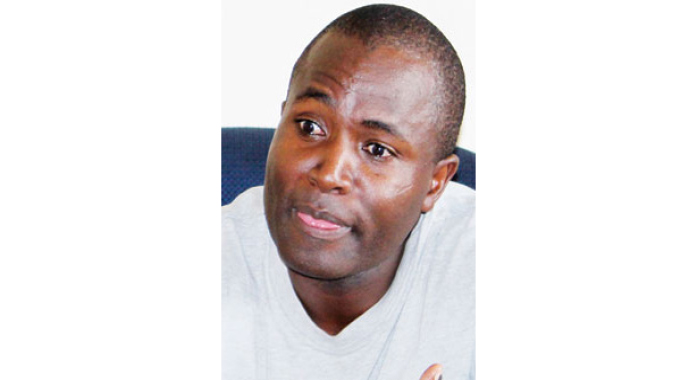Breast Cancer Awareness Month marked across the world

Dr Tatenda Simango
BREAST Cancer Awareness Month, marked across the world every October, helps to increase attention and support for the awareness, early detection and treatment as well as palliative care of this disease.
Breast cancer — it’s a scary thought, and all too many women assume that it won’t happen to them.
Breast cancer is by far the most common cancer in women worldwide (second to cervical cancer in Zimbabwe), low — and middle-income countries. It’s incidence has been rising up steadily in the last years due to increase in life expectancy, increase urbanisation and adoption of Western lifestyles.
Early detection of the disease remains the cornerstone of breast cancer control. When breast cancer is detected early, and if adequate diagnosis and treatment are available, there is a good chance that breast cancer can be cured. If detected late, however, curative treatment is often no longer an option. In such cases, palliative care to relieve the suffering of patients and their families is needed.
Most women with breast cancer are diagnosed in late stages due mainly to lack of awareness on early detection and barriers to health services.
Breast Cancer Awareness Month began in 1985 as a partnership between the American Cancer Society and the pharmaceutical division of Imperial Chemical Industries. Betty Ford helped kick off the week-long event, as she was herself a survivor of breast cancer. She was diagnosed when her husband, Gerald Ford, was president of the United States and brought even more attention to breast cancer.
The awareness movement started with Charlotte Haley, who had battled breast cancer in America. She introduced the concept of a peach-coloured breast cancer awareness ribbon. She attached them to cards saying, “The National Cancer Institute’s annual budget is 1,8 billion US dollars, and only 5 percent goes to cancer prevention. Help us wake up our legislators and America by wearing this ribbon.”
Haley was strictly grassroots, handing the cards out at the local supermarket and writing to prominent women, everyone from former First Ladies to Dear Abby. Her message spread by word of mouth. Haley distributed thousands of these cards.
The peach-coloured ribbon of Haley aroused interest in Alexandra Penney, editor-in-chief of Self magazine, who was working on Self magazine’s 1992 National Breast Cancer Awareness Month issue. She saw the initiative to adapt to Haley’s idea by working with her. But Haley rejected the offer saying that Self’s initiative was too commercial.
Unable to use Haley’s peach ribbon for legal reasons, Self magazine and others interested in promoting breast cancer awareness with a ribbon as a symbol decided to go pink. They handed out an impressive 1,5 million of them and ushered in the pink ribbon as the premier visual reminder of Breast Cancer Awareness Month.
When you consider the emotional and mental effect that pink has it’s quite understandable why it was chosen to be the colour of breast cancer awareness. It wasn’t simply because of the colour’s feminine association, though that is a factor.
Margaret Welch, the Director of the Colour Association of the United States, notes that studies have found that pink is thought to be:
– Life affirming
– Calming
– Playful
– Quieting
– Stress relieving
Pastel pink like the colour used in the breast cancer awareness ribbon is also thought to be health giving.
The method involves the woman herself looking at and feeling each breast for possible lumps, distortions or swelling.
It makes one become familiar with the usual appearance and feel of one’s breasts. Getting to know one’s breasts makes it easier to become aware of any changes.
Breast self-exam is done about three to five days after one’s period when breasts are less likely to be tender and swollen. Women at menopause should choose a particular day of the month when to do breast self-examination.
Early detection of abnormalities gives the doctor a better chance to offer effective treatment.
The Cancer Association of Zimbabwe website has simple to follow self-examination tips.
What to look for during a breast examination:
— On the breast itself:
– Dimpling or puckering of the skin surface
– Enlarged veins
– Lump or thickening which may be painless
– Unusual rash on the nipple or breast
– Persistent pain in the breast though this is not usual
– On the nipple:
-Discharge or blood through the nipple
-Rash on the nipple or around the nipple
-Lump or thickening which may be painless
-An inverted nipple (turned in nipple)
-Change in the position of the nipple
-Lump or thickening beneath the nipple
-On the arm:
– Swelling of the upper arm
-Swelling or lump in the armpit
You should examine your breasts monthly from the age of eighteen years onwards. The best way to do this is while standing up looking into the mirror, standing up in the shower or lying down on the bed.
– One way of breast self-examination:
– Stand before the mirror, inspect both breasts for any unusual discharge, dimpling, scaling or puckering of the skin.
– Watching in the mirror, clasp hands behind head and press head against hands. This helps to identify any changes in the shape or size as the muscles contract.
– Press hands on the hips and bend towards the front or mirror while pulling shoulders and elbows forward. The pulling of muscles helps to identify any abnormalities on the breasts.
-While in the shower, with soapy hands, lift arm and with four fingers of your right hand, gradually work from the outer edge of the breast in small circles towards the nipple. The circular movements will help identify any lumps or abnormalities.
Following the same process use your left hand to examine the right breast.
Make time to contribute towards the cause. Till next week let’s stay vigilant and stop the spread of Covid-19.
* Dr Tatenda Simango can be contacted on [email protected] or on www.9thavenuesurgery.co.zw









Comments